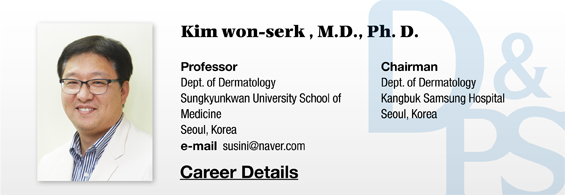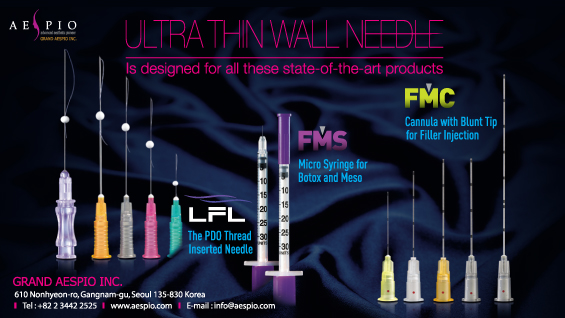▶ Previous Artlcle : #8. Surgical Treatment of Scar II
We have addressed a variety of scar treatment modalities in a series of articles. In this article, I will introduce actual cases to see the advantages and disadvantages of the attempted methods.
These are my personal experiences, and I hope the readers would use this article as a reference for attempting new modalities or improving your personal style, rather than accepting these cases unconditionally.
[Advertisement] ULTRA THIN WALL NEEDLE – Manufacturer: AESPIO(www.aespio.com)
Acne Scars (A 25-year-old Male)
- Acne scar is an atrophic scar most frequently encountered in the outpatient setting.
- Requires various treatment modalities.
- Ice-pick scars were predominant in this case.
- Having a narrow and deep appearance, this scar type is the least responsive to laser therapy.
- The patient have had a number of laser therapies, including fractional laser, in vain, before visiting our clinic.
- Traditional methods: Laser ablation, punch excision or graft, or repetitive partial TCA peeling was considered.
Treatment Procedure
1. Using the small spot size of CO2 fractional laser, a very high energy was projected to the severe atrophic area, which made an effect similar to punch excision.
2. Non-ablative fractional laser was used around the cheeks. Rapid and safe outcome can be expected by using more than 2 lasers.

Before treatment After treatment
Fig. 1. Acne scars
Nail scratch Marks
- Nail marks are frequent in children.
- Formed in the opposite direction of the resting skin tension line: easily detectable
- The lesion was too narrow and deep for surgical scar revision.
- Postoperative outcome: generally not satisfactory or even worsened.
- Laser ablation: The lesion can be extended or visually more evident due to the coloration of the surrounding area.
Treatment Procedure
1. Mild therapy with ablative fractional laser (AFL) 2-3 times at intervals of one month.
2. Laser toning was repeated during and after the AFL therapy to eliminate the coloration and to even the skin color. AFL reduces the risk of side effects from laser ablation, and laser toning prevents the development of PIH, achieving the primary purpose of scar treatment, which is blending of the lesion area with surrounding tissues.

Before treatment After treatment
Fig. 2. Nail scrach mark
-To be continued-
▶ Previous Artlcle : #9-2. Case series of Scar Treatment





















